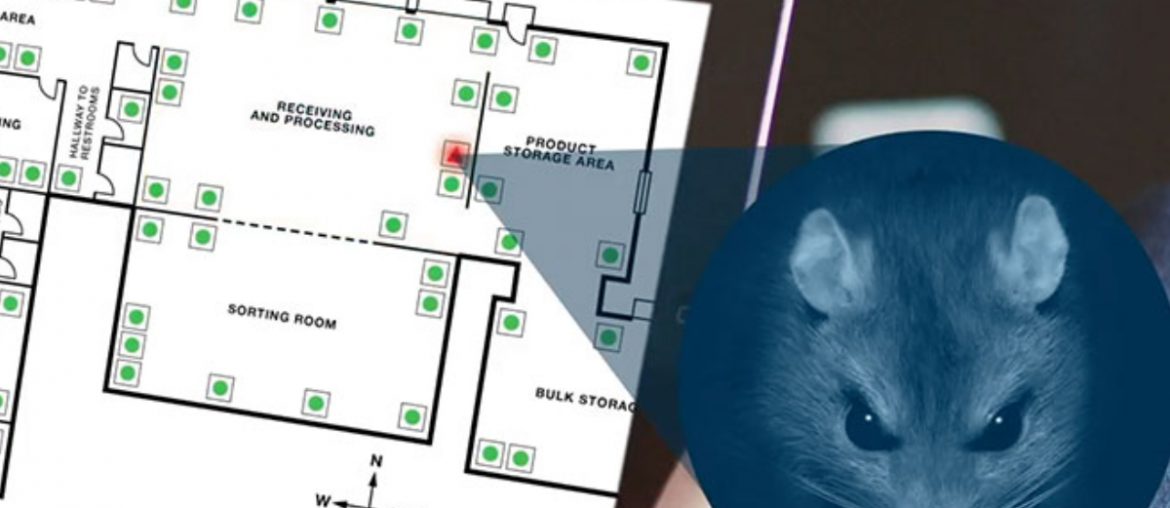Brand reputation is the perception the public has of a company consisting of its employees, partners and products or services it provides. Brand-damaging events can come in many different forms, but maybe none are more inconspicuous than those caused by pests. We take it for granted that our food is produced and stored in a safe manner, offering us the quantity and quality we expect. However, nothing is more worrisome than when information comes to light that can lead to public concerns about the safety and quality of the food we eat. These brand-damaging events can cause disease and illness within the community and destroy a company’s image, sometimes forever.
In 2018, a rodent-borne disease outbreak hit a major egg producer, causing more than 20 cases of salmonella poisoning. About 288,000 eggs were recalled, spanning several North American states, triggering a public relations emergency. In total, $2.6M was spent in sanitation and restoration costs alone. Not calculated into this was increased insurance premiums, cost of legal action taken by the sickened individuals and the harder to calculate damage to the brand’s reputation.
John Moore, Technical Director for FSS based out of Westfield, IN states, “The problem is our traditional pest service in these food facilities is based on a compliance need and not integrated pest management (IPM), as well as identifying the overall risk associated within the account.” Depending on the facility, technicians are mandated to inspect traps along the interior perimeter either weekly, bi-weekly, or monthly as it pertains to the facility’s audit program and commercial business plan. Because some of these facilities can house hundreds of multi-catch traps, a technician can spend most of their time servicing empty traps along the interior perimeter. This activity often will not allow them time to do anything else, such as monitoring for Indian Meal Moth in a grain facility or identifying a rodent infestation within palletized goods awaiting distribution. This does not mean multi-catch traps aren’t useful in a food safety program; however, they should complement the program and are not the determining risk factor of the account. As seen in large facilities, rodent pressure can change, so there is not a one- size-fits-all model a PMP can rely on to manage this aspect of a program. If facilities are this dynamic in nature, perhaps it’s time to embrace the ways electronic monitoring can benefit your service and protect your customer’s brand.
Envu’s RMS, designed to protect your customer’s brand and differentiate your service, is now at your fingertips with integration to PestPac!
- Intuitive setup – average time to install depends on size of the facility, but installation typically takes just four hours for new customers. Once familiar with the process, they became very efficient and can reduce the time it takes to install by more than half.
- Low Maintenance – with less than 1% false positives recorded in the field, Envu’s RMS is the most robust ERM (electronic rodent monitoring) solution available.
- Audit Compliant – audit trail and trend analysis report available with automated, time-stamped data designed for an array of stakeholders including: QA Managers, Site/Facility Managers, Sanitation Managers, Service Providers and third party auditors.
- Scalability – with our powerful technology, even 1 million sq ft facilities only need a few gateways, making Envu’s RMS the most efficient and cost effective ERM solution available. (Site audit is conducted together virtually to ensure proper connection before install.)
- Enhanced IPM – the traditional service model is commoditized and framed around the number of traps and time it takes to check them. The enhanced service model, enabled by RMS, allows technicians to thoroughly inspect the facility (away from the trap line). They can do what they’ve been trained to do, find other conducive conditions and infestations to protect your customer’s brand as well as remediating any activity around the interior perimeter and quickly identifying root cause of the capture. You can now become a more integral partner in your customer’s food safety program and not the lowest cost, trap checker who can easily be replaced.
- Transparency – RMS allows your customer to view data across their network of facilities. This level of transparency is a huge value to your customer and can help you win bids with multiple locations.
- Device Agnostic – we recognize the strengths of others in this space. That is why we’ve partnered with the best third party device manufactures to have their latest technology attach to our system and portal.
More and more customers are looking for better service and enhanced transparency. Technology can unlock the power and value of your well-trained technicians. Without leveraging new technology, how will you continue to differentiate your service beyond what you have already done? It’s time to change the game, or more specifically, your game. To learn how to put RMS to work for you, please contact support@digitalpestmanagement.com.




